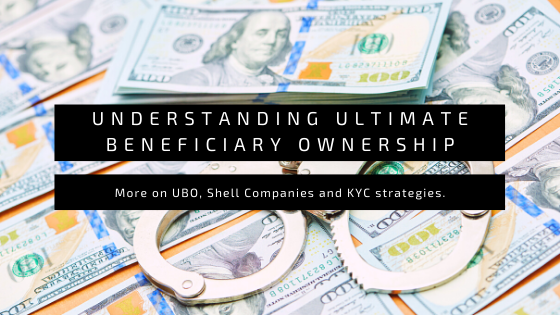
Understanding Ultimate beneficiary Ownership and more!
What is a beneficial owner? The FATF defines it as, “A beneficial owner is defined as the natural person(s) who ultimately owns or controls a customer and/or the natural person on whose behalf a transaction is being conducted. It also includes those persons who exercise ultimate effective control over a legal person or arrangement.” With the convenience, flexibile offshore standards and access available to people nowadays for registering a company, it is very easy to start one with very little information required. Also, layers of indirect ownership complicates matters further unlike a publicly listed company.
Beneficial ownership identification and authentication is an important aspect of the client onboarding and KYC process. Although the significance it has on the financial industry is well-known, other companies/firms with know your customer (KYC) and know your third party (KYTP) disclosure duties are also directly affected due to this. Non- compliance with disclosing the beneficiary structure not only causes financial but also reputational damage to the organisation or person.
After the famous Panama papers scandal, the need for better due diligence and KYC measures to disclose ownership structures and being transparent about it was highlighted. The documents that leaked information regarding shell companies indicated that many companies were being set up in jurisdictions like Cayman Islands, Wyoming, Nevada, British Virgin Islands etc., where the regulatory obligations and thresholds are much lower. Many of these companies were connected to Political families. Shell companies cost millions or dollars all over the world and are the biggest risk when it comes to money laundering as most criminals resort to creating them for laundering their illicit proceeds, especially in offshore accounts.
There are several legislations that deal with disclosure of UBO (ultimate beneficiary ownership) in order to prevent financial crimes such as fraud, tax evasion, corruption and money laundering such as the DoDD-Frank Act, EU’s 6AMLD, FinCen final rule and FATCA. The Panama scandal has intensified their attempts to track down such criminals by implementing stricter KYC policies in order to find the actual business owner and making sure their clients are trustworthy. It is best for compliance officials and departments to put together a risk-based approach for identifying and verifying UBO. These layers of ownership demonstrate high risk situations and, hence, need stricter investigation and due diligence by compliance teams to clarify that the compliance department has taken an appropriate course of action in order to identify UBO.
Apart from manual methods of investigation, now most organisations are armed with technology to conduct KYC procedures while client onboarding, use data analytics, keeping an eye on companies incorporated in risky jurisdictions or low regulatory areas and look for a pattern when it comes to the shareholders or people involved if they can be traced to a politician or someone with political affiliation. Since globalisation has opened doors and opportunities for everyone internationally, which is both good and bad, firms must use such reasonable measures to stay compliant with regulations and protect themselves.
Please note that all opinions made on this blog should be treated as a guide and not legal advice.





